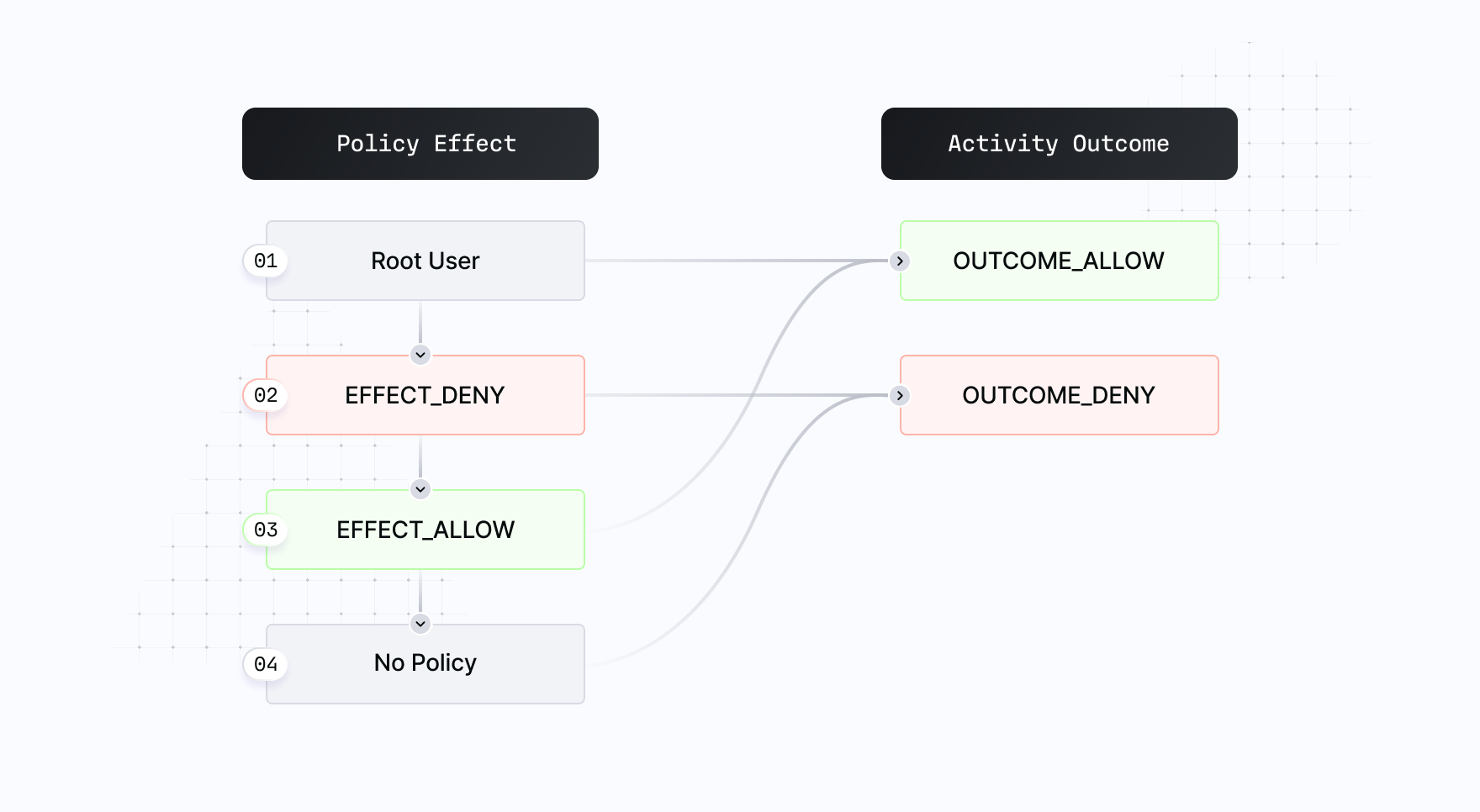Policy overview
Our policy engine is the foundation for flexible controls and permissions within your organization. This page provides an overview of how to author policies.
Policy structure
Our policies are defined using JSON. The effect determines if an activity should be allowed or denied based on the evaluation of the consensus and condition fields.
consensus and condition are composed of ergonomic expressions written in our policy language that must evaluate to a bool. consensus determines which user(s) may take an action (e.g. a given user ID). condition determines the conditions under which the policy applies (e.g. signing with a specific wallet). These fields can be used alone or together.
See below for an example policy that allows a single user to send transactions to a single address
{
"effect": "EFFECT_ALLOW",
"consensus": "approvers.any(user, user.id == '4b894565-fa11-42fc-b813-5bf4ea3d53f9')",
"condition": "eth.tx.to == '<ALLOWED_ADDRESS>'"
}
Policy evaluation
All policies defined within an Organization are evaluated on each request. The image below describes how an activity outcome is determined when resolving multiple policies. The rule follows the below steps:
- If a quorum of root users takes the action, the final outcome is
OUTCOME_ALLOW - Else if any applicable policy has
EFFECT_DENY, the final outcome isOUTCOME_DENY. This is also referred to as "explicit deny." - Else if at least one applicable policy has
EFFECT_ALLOW, then the final outcome isOUTCOME_ALLOW - Else the final outcome is
OUTCOME_DENY. This is also referred to as "implicit deny." In cases of conflicts,EFFECT_DENYalways wins.
Stated differently:

Almost all actions on Turnkey are implicitly denied by default. There are a few exceptions, however:
- Root users bypass any policies.
- All users have implicit GET (read) permissions in their own Organization and any associated Sub-Organizations.
- All users have implicit permission to change their own credentials.
- All users have implicit permission to approve an activity if they were included in consensus (i.e., a user specified as part of the consensus required to approve a SIGN_TRANSACTION activity does not need separate, explicit permission to sign transactions).